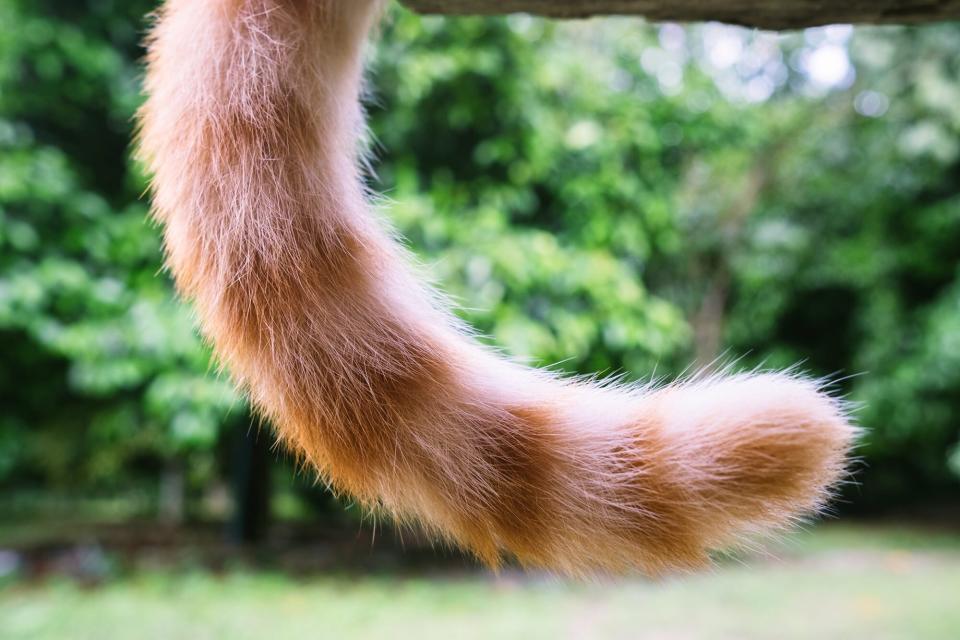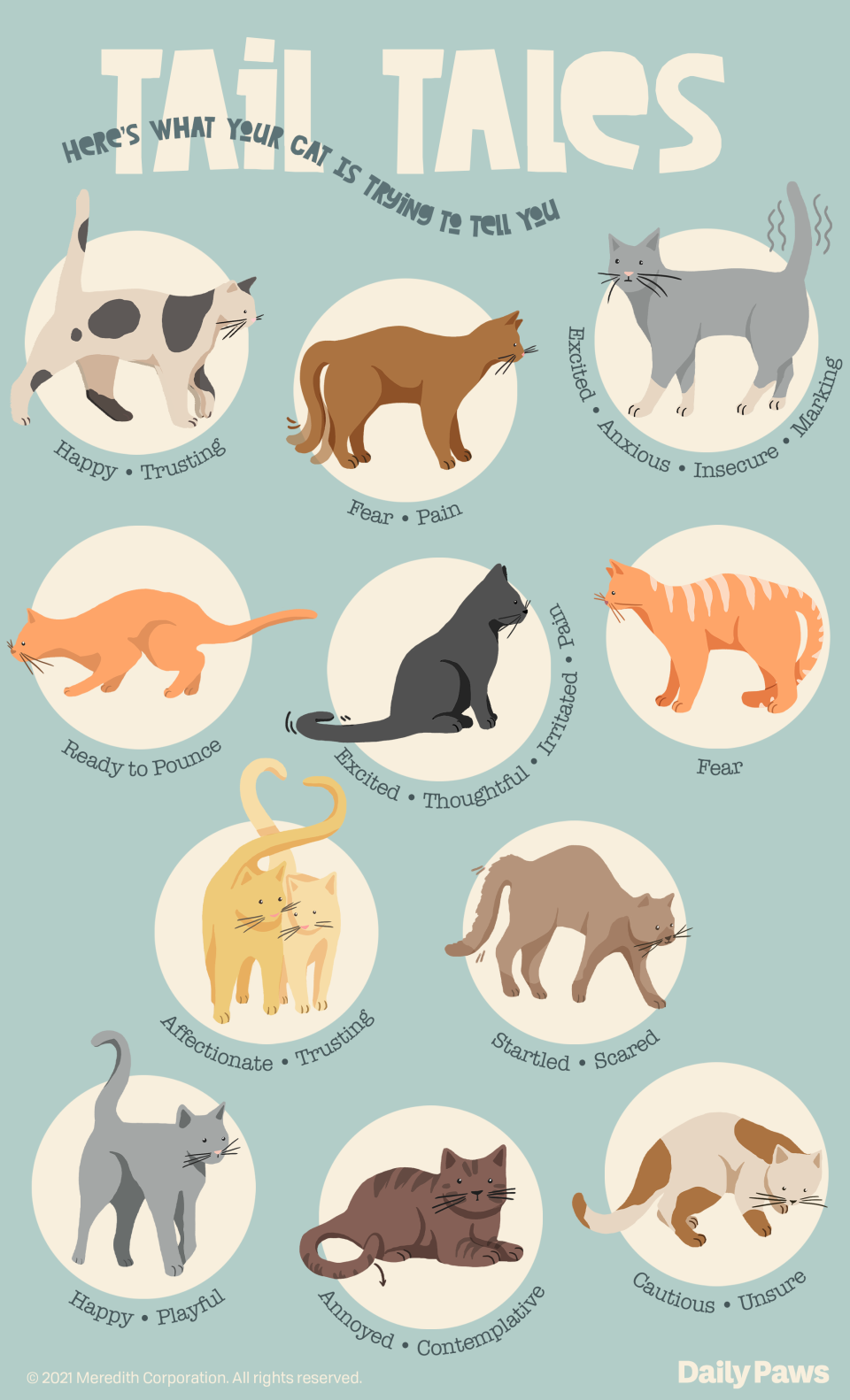Do Cats Control Their Tails? Yes, and Sometimes No

Ekachai Chobphot / EyeEm / Getty
Fluffy or bare. Long or short. Crooked or straight. White or gray. Solid or spotted. There are many aspects of your cat's tail that are beyond their control. But according to Laura Moon, DVM, of Green Hills Veterinary Clinic in Moberly, Mo., how it moves isn't one of them.
We asked Moon to start at the end (of cats, that is) and help explain the movement behind these perplexing appendages, including how cats control their tails and whether cats have feeling in their tails.
Do Cats Control Their Tails?
Healthy cats with normal anatomy and physiology are able to control their tails from the base to the tip and know how to do so instinctually, Moon explains. Being able to move their tails is an important part of how cats maintain their balance and how they express themselves nonverbally. But despite their significance in daily life, Moon notes that cats who are born without tails or who lose them to injury can do just fine without them.
How Do Cats Control Their Tails?
Cat tails can seem somewhat mysterious. (After all, we can't exactly draw from personal experience.) However, under all of that fluff, you'll find a system that isn't all that dissimilar to what gives our own appendages form and function.
RELATED: How to Tell If Your Cat Has a Broken Tail
Cat Tail Anatomy
Your cat's tail is actually part of their spinal column. The spine consists of five distinct regions of vertebrae—cervical, thoracic, lumbar, sacral, and caudal—that span from the neck to the tip of the tail. A typical cat tail contains between 18 and 23 caudal vertebrae that gradually decrease in size from the base to the tip. And because the average cat has a total of 230 bones, this means roughly 10 percent of your kitty's bones are found in their tail.
In addition to these bones, Moon says your cat's tail contains connective tissue (ligaments and tendons), muscle, blood vessels, skin, and fur. And while the spinal cord doesn't extend into the vertebrae of the tail, the tail is home to a system of nerves that branch off from the cord.
Voluntary Movement
Most cat tail movement is voluntary, says Moon, which makes sense when you consider their purpose. "Cats use their tails to balance, both when walking on narrow footing and when hunting prey," she continues. "They also use them to communicate with other animals (humans included). For example, a big, poofed-out tail can indicate they're scared or nervous, and a sleek tail that gently moves back and forth can indicate contentment."
As with human physiology, all of the action begins in the brain with your cat determining what the tail should do. Nerves then act like cables, delivering the command via electrical signals from the brain to the muscles that manipulate your cat's tail.
Involuntary Movement
While your cat controls most of the action, their tail may move involuntarily because of the following:
Deep sleep: Have you caught your cat twitching and contorting mid-slumber? Similar to humans, it's thought that cats can have vivid dreams during the REM (rapid eye movement) stage of sleep, which can result in some unconscious movements.
Reflex: Surprise! Just like our limbs can involuntarily move in response to a stimulus (your head jerking backward when startled, for example), a cat's tail may move due to an involuntary reflex.
Injury: Any injury that interferes with the normal function of your cat's tail can result in unintentional movements. Keep in mind that the trauma doesn't have to originate in the tail for it to be affected.
Do Cats Have Feeling in Their Tails?
If you've ever accidentally stepped on your cat's tail and spent the following hours begging for forgiveness, you're painfully aware that they do indeed have feeling. In fact, Moon says they're very sensitive, which may explain why some cats won't let you near their tails. This is because cat tails don't just have motor nerves. They also have sensory nerves that are responsible for carrying signals that help your cat experience touch. So watch where you step to prevent any pinched tails!
Different Cat Tail Movements and What They Mean
Your cat's tail can talk. Really! But instead of listening, you'll need to use your eyes to catch these common nonverbal cues:

Kailey Whitman

